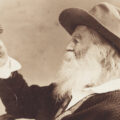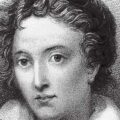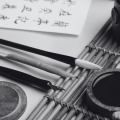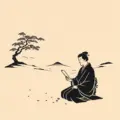The use of poetic devices is, from a technical perspective, essential to the nature of poetry itself. Even some of the supposedly simple poems call on a wide range of poetic devices, which are often regarded as the difference between a nice sentence and a work of poetic art. One of my personal favourite poets, William Carlos Williams, was particularly adept at this. Writing relatively simply, without overly romantic language or complexity, Williams was able to create works of incredible beauty from the reality of life, with poems like The Red Wheelbarrow, This is Just to Say and Complaint all being some of the most beautiful poems ever conceived in the English language (in my opinion).
Understanding the variety of poetic devices, including when and how to use them, and identifying when other poets are utilising these tools is extremely important when it comes to understanding poetry, and creating your own. Of course, please don’t consider this a comprehensive guide to poetic devices, as there are dozens I’ve missed, but hopefully this will set you on your way towards understanding the various devices used in poetry, and how you can start to utilise them in your own work.
Contents
What Are Poetic Devices?
Poetic devices are literary techniques used to add meaning, emotion, and depth to poems. They allow poets to creatively express ideas using language and structure. Some common poetic devices include metaphor, simile, alliteration, rhyme, repetition, imagery, and symbolism. These devices can highlight important concepts, create moods, reinforce themes, and help shape the overall experience of reading a poem.
How Do Technical Devices Contribute To The Meaning Of A Poem?
Technical devices contribute to a poem’s meaning by emphasising certain words or ideas, establishing mood and emotion, and drawing connections between different elements of the text. For example, the use of rhyme can call attention to certain lines or words, while repetition of sounds, words or phrases creates rhythm and intensifies meaning. Imagery helps readers visualise the scene or themes within a poem. Together, poetic techniques transform a poem from ordinary words into an elegant, evocative literary artform.
Examples Of Poetic Devices
Some examples of common poetic devices include:
- Metaphor: An implied comparison between two unlike things, e.g. “All the world’s a stage”
- Simile: A direct comparison using “like” or “as”, e.g. “My love is like a red, red rose”
- Alliteration: The repetition of initial consonant sounds, e.g. “sweet birds sang softly”
- Rhyme: Corresponding sounds occurring at the ends of words, e.g. “June” and “moon”
- Repetition: Repeating words or phrases for emphasis or rhythm
- Imagery: Using sensory details to evoke images, sights, sounds, smells, etc.
- Symbolism: Using objects, situations or events to represent abstract ideas
What Are Rhetorical Devices?
Rhetorical devices are techniques used to persuade, inform, or motivate an audience through writing or speech. Often used in non-fiction and speeches, common rhetorical devices include:
- Rhetorical question: A question asked to encourage readers to reflect without expecting an answer
- Anaphora: The repetition of a word or phrase at the start of successive clauses or sentences
- Analogy: Comparing two things for clarification or explanation
- Anecdote: A short account of an interesting event used to illustrate a point
- Allusion: An indirect reference to something, such as a well-known event, work of art, etc.
What Is The Difference Between A Poetic Device And A Rhetorical Device?
The main difference is their purpose – poetic devices are used to create additional meaning, emotion, and beauty within a poem, whereas rhetorical devices persuade and inform an audience. However, there is sometimes overlap. For example, repetition could be a poetic device when used to create rhythm in a poem, but also a rhetorical device when used to hammer home a persuasive point in a speech. Overall, poetic devices are focused on artistry and form, rhetorical devices on persuasive impact.
What Are Sound Devices?
Sound devices, also known as auditory devices, emphasise and reinforce a poem’s meaning through its sounds. They create internal rhyme, rhythm, and musicality that makes the poetry more aurally interesting and memorable. Some examples of sound devices include:
- Alliteration – The repetition of initial consonant sounds
- Assonance – The repetition of similar internal vowel sounds
- Consonance – The repetition of ending consonant sounds
- Onomatopoeia – Words that imitate sounds
- Rhyme – Corresponding ending sounds in words
- Rhythm – The recurring pattern of strong and weak beats
Sound devices can highlight important concepts, create moods, establish pace and flow, and allow poets to play with the aesthetics of language itself.
What Are Narrative Devices?
Narrative devices are techniques used to tell a story or shape a narrative. In poetry, narrative devices give glimpses of events, characters, and setting to engage readers. Some examples include:
- Flashbacks & flashforwards – Jumping to past or future events
- Foreshadowing & backstory – Hinting at what happens later or before
- Characterization – Descriptions, dialogue, etc. revealing personalities
- Point of view – Telling the story from a 1st, 2nd or 3rd person perspective
- Conflict – Struggles between opposing forces that drive the narrative forward
How Are Narrative Devices Used In Free Verse Poetry?
Unlike formal poetry, free verse poetry does not have to conform to patterns of metre or rhyme. This freedom allows poets to shape narratives in innovative ways. For example, they may:
- Jump between different times non-linearly using flashbacks
- Use stream-of-consciousness narration based on 1st person thoughts
- Express multiple perspectives by rapidly shifting points of view
- Use disjointed images that the reader must piece together
- Suggest stories through metaphor, symbols and sensory details
So while less restricted, free verse poets can still harness technical narrative devices to suggest plot, settings and intriguing characters.
How Are Devices Used In Free Verse Poetry?
Free verse poetry often uses devices in more experimental ways compared to traditional forms. Without having to stick to predefined structures, free verse poets can focus more on using devices to create meaning and shape the reader’s experience. For example:
Examples Of Devices Used In Free Verse Poetry
T.S. Eliot’s “The Love Song of J. Alfred Prufrock” uses rich imagery and metaphors to reveal the inner anxieties of the main character. The often random and jarring images reflect Prufrock’s chaotic mind.
The repetition in Allen Ginsberg’s “Howl” evokes the raw energy of unrestrained emotion and the madness of the characters described. The insistent anaphora of “who” begins line after line.
Sylvia Plath’s poem “Daddy” uses controversial Holocaust metaphors and shocking imagery to convey the dysfunctional relationship between the speaker and her father. This is an example of how free verse can use devices that formal poetry would likely avoid.
The Role of Devices in Establishing Voice
Poetic devices not only add artistry and persuasiveness, they are also instrumental in establishing the unique voice and style of the poet. For example, Walt Whitman’s use of anaphora and free-flowing lines are essential to his expansive, compassionate poetic voice. Emily Dickinson’s slant rhyme and compact expression develop her pithy, philosophical style. Analysing how poets use devices can shed light on how they craft their literary voice.
Comparing Device Usage Between Poets
It can be illuminating to directly compare how different poets employ the same techniques. For example, William Carlos Williams and Amy Lowell both use imagery and metaphor, but take vastly different approaches – Williams using compact “imagist” language compared to Lowell’s decorative lyrical style. Finding where poets converge and diverge in their application of devices offers another angle into poetic analysis.
How Do You Analyse Devices In Poetry?
To analyse how poetic devices are used in a poem, follow these steps:
- Read the poem several times closely to identify devices. Mark examples of imagery, metaphor, repetition, etc.
- Analyse how the devices impact meaning – do they emphasise certain ideas or deepen themes?
- Examine their effect on structure – do devices like rhyme, enjambment or line length organise the poem?
- Consider their emotional appeal – do they create moods or shape reactions and feelings towards characters or ideas in the poem?
- Compare device usage across a poet’s body of work to find their style and preferred techniques. How do devices tie different poems together?
What Are Some Tips For Identifying And Analysing Devices In Poetry?
Some tips that can help you when analysing poetic devices:
- Move line by line to spot key techniques like alliteration and repetition
- Circle words that stand out for rhyme, striking imagery, symbols, etc.
- Identify contrasts and comparisons that suggest similes and metaphors
- Summarise the mood and emotions you feel when reading the poem
- Isolate phrases that use sound play like assonance and consonance
- Consider how form, structure and pacing reinforce the devices
The Interplay Between Form and Device
In structured poetry like sonnets, the form intrinsically shapes how poetic devices function. For example in a Petrarchan sonnet, the volta “turn” between the octave and sestet determines how metaphor and imagery shift. In free verse, form is liberated but can still direct devices through line breaks, spacing and layout. Analysing form and device together is key.
Sound Devices In “Stopping By Woods On A Snowy Evening”
The repetition of the line “And miles to go before I sleep” is a great example of a sound device adding meaning in this famous Robert Frost poem. The consonance of the “s” sounds slows down the pace, emphasising the long journey ahead. The soothing repetition contrasts sharply with the urgent obligations expressed in the line. Together with the tranquil winter imagery, these sound devices expertly evoke the speaker’s conflicted state of both longing for rest yet needing to move on.
Examples Of Devices In Free Verse Poetry
Here are some more great examples of poetic devices used skillfully in free verse:
Howl” by Allen Ginsberg uses powerful anaphora (repetition of a word or phrase at the beginning of successive lines) to list the types of radical figures in the poem:
“who bared their brains to Heaven under the El and saw Mohammedan angels staggering on tenement roofs illuminated”
The repetition of “who” across multiple lines creates a captivating rhythm while cataloguing the daring thinkers and dreamers in the Beat generation that Ginsberg celebrates.
In “Hope is the thing with feathers” by Emily Dickinson, the central metaphor of comparing hope to a bird endures beautifully:
“And sweetest in the gale is heard; / And sore must be the storm / That could abash the little bird / That kept so many warm.”
Here Dickinson suggests hope is like a songbird, singing sweetly through even the fiercest storms of life. This lyrical metaphor gives hope a delicate yet persevering quality.
Emma Lazarus’ poem “The New Colossus” uses the famous statue of liberty metaphor to incredible rhetorical effect:
“Give me your tired, your poor, / Your huddled masses yearning to breathe free, / The wretched refuse of your teeming shore.”
This iconic symbol of immigration completely redefined America’s identity as a nation welcoming the world’s most vulnerable.
In the poem “Ozymandias” by Percy Bysshe Shelley, the crumbling statue of the mighty king Ozymandias becomes a haunting symbol of the impermanence of political power:
“And on the pedestal these words appear: / ‘My name is Ozymandias, king of kings: / Look on my works, ye Mighty, and despair!’ / Nothing beside remains.”
The arrogant inscription is an ironic contrast to the statue’s ruined state, warning that all empires eventually fall.
If you’re looking for a more detailed breakdown, in addition to practical poetic devices used in poetry, I’ve put together a short, simple analysis of Kamala Das’ Summer in Calcutta – a reasonably short poem with a wide range of technical and poetic devices which can be a great starting point for practical comprehensive of these techniques.
- Glossary of Japanese Poetry Terms - 26 February 2025
- What is Waka Poetry? - 23 May 2024
- How to Identify the Kigo in a Haiku: - 22 March 2024





